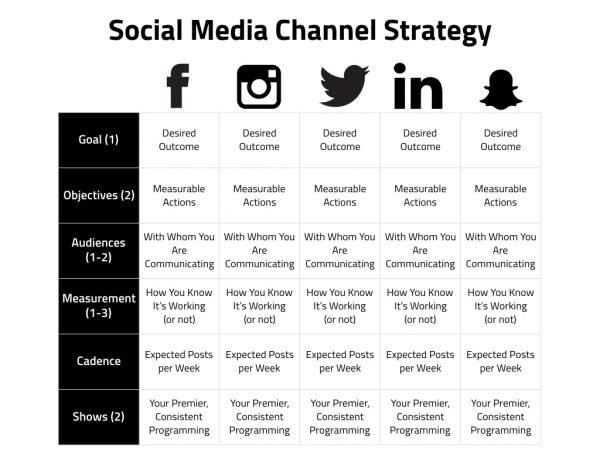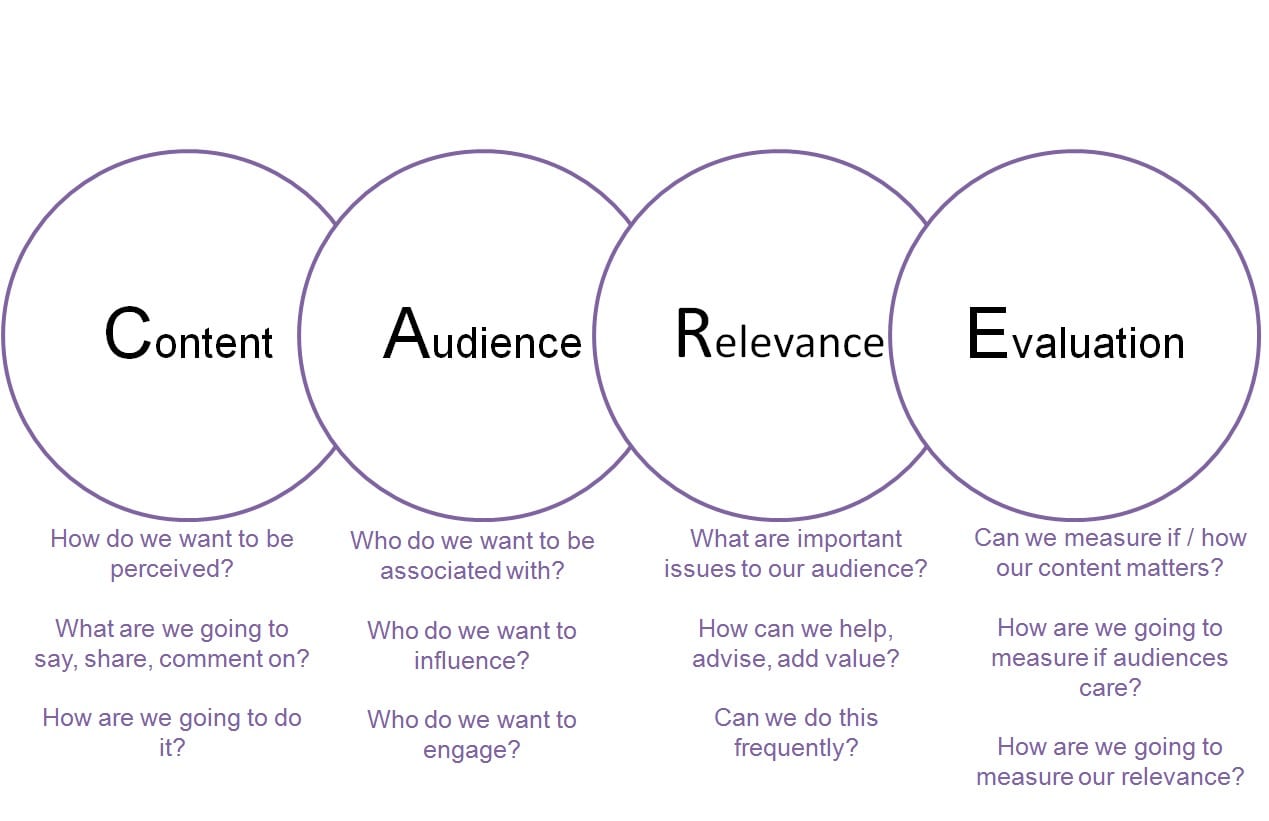November 15, 2020
Creating a Social Media Strategy That Works – Volume 3

To compete with any modern business, you need to get online—fast. Building a social media strategy is about ensuring you understand the audience, what they want, where they congregate, and how you can best help them.
A social strategy is all about making a solid plan. In volume 1 we discussed setting goals and attainable metrics that make sense. In volume 2 we uncovered how to analyze the competition and the best types of social listening you can perform.
Finally, it’s time to start building an online presence and getting the message out there. But first, you need to conduct a social audit!

Step 4
Audit Your Social Media to Take Stock of Efforts
Once social accounts are set up and you’ve posted a few things, it’s time to take stock of your efforts. A business should ask important questions like:
- What is really working and what is not? Why?
- Who is engaging with you? What type of audience?
- Which networks do your target audience use?
- Where are people talking about your brand and/or products/services?
- How does your social footprint compare to the competition?
Once you’ve collected the answers to some of these questions, finding ways to improve will be easier. Start thinking about where to meet your audience in the middle and what you can offer to assuage their toughest pain points.
Creating a Social Media Management Template
If you need to stay organized during an audit, creating a template or spreadsheet may be helpful. You’ll want to include columns for data like:
- Log in and password
- Channel owner
- Mission Statement
- Key Performance Indicators (KPIs)
- Top content (based on chosen KPI)
- Audience demographics
- Notes

Having a document that lists out all this information will help you better track audience metrics and market accordingly. This type of efficiency is what building a social media strategy is all about.
The point of a social media audit is to give you a clearer understanding of the purpose that each of your social accounts serves. If the purpose of the account isn’t clear, seriously consider if it’s worth keeping. You’re running a business, after all, and social media management takes time. If a channel is almost dead in the water, it may be time to kill it completely.
Is My Social Media Setup Working?
To help decide if your social media set up is working, ask yourself a few of these critical questions:
- Is this where my audience congregates? Are they here?
- If so, how are they using this platform? How can I best reach them?
- Can I use this account to achieve my goals or do I need something else?
Many social sites have a whole separate service for opening and running a business account. In some cases, your entire brand authenticity is hinged on whether or not the channel deems your account “verified.”
Asking all of these questions helps a business stay strategy focused.
Look for the Imposter Accounts
During an audit, it is not uncommon to find fake accounts that are using your name or the names of your product. This is simply the nature of modern business. However, this form of imitation is not flattery and these imposters can be harmful to your brand. Especially if they misbehave online.
Always report them.
Never waste any time. Ensure all your accounts are “verified” to let fans know they are dealing with the real brand.
Step 5
Setting up the Social Media Accounts That Work Best
Even if you’ve already established a social media presence, using the channels for business or specific campaigns typically requires a complete overhaul.
In some cases, it also means you need to open up more profiles and establish channels you may never have considered. There’s no time for being a Twitter snob or giving preferential treatment to Facebook. You go where the audience is, and that means engaging on a platform where they are speaking the loudest.
As you decide which social networks to use, it will also help to define a strategy. Small and medium businesses are typically using social tools to communicate with customers and provide stellar service.
Writing a Mission Statement
Start by writing out a mission statement for each social platform. What do you want to accomplish? It only needs to be a simple, one-sentence declaration.
For example,
“We will use Twitter to address issues and keep our incoming call volume down.”
“We will use Facebook for social advertising to save on labor and marketing costs.”
“We will use LinkedIn to promote our company and share the culture for future recruitment.”
If you aren’t able to create a solid mission statement for a particular channel, the reason may be because you don’t need it.
Creating Social Media Profiles
Once you’ve established which networks you want to work with, it’s time to create your social media profiles. If you already have them set up, then you must improve on the existing ones. Make creating a profile, make sure:
- All profile fields are filled out
- Include all keywords people would use to search your business
- Use consistent branding across all networks (i.e. logo, images, etc.)
Ensure all the images are of high quality, with the recommended dimensions.  You could spend hours filling out a profile but if the picture is blurry, it will make your entire brand seem unprofessional. There is VERY little wiggle room when it comes to making a first impression online.
You could spend hours filling out a profile but if the picture is blurry, it will make your entire brand seem unprofessional. There is VERY little wiggle room when it comes to making a first impression online.
In Conclusion
Setting up a social media strategy takes a lot of research, time, and intuition. This is not a cut and dry process. You will be testing the results of each decision, every step of the way. When you find something that works, leave it. If it’s broken, try something else until you have a well-oiled machine that engages consumers, leverages cost savings, and sells the brand for you.








